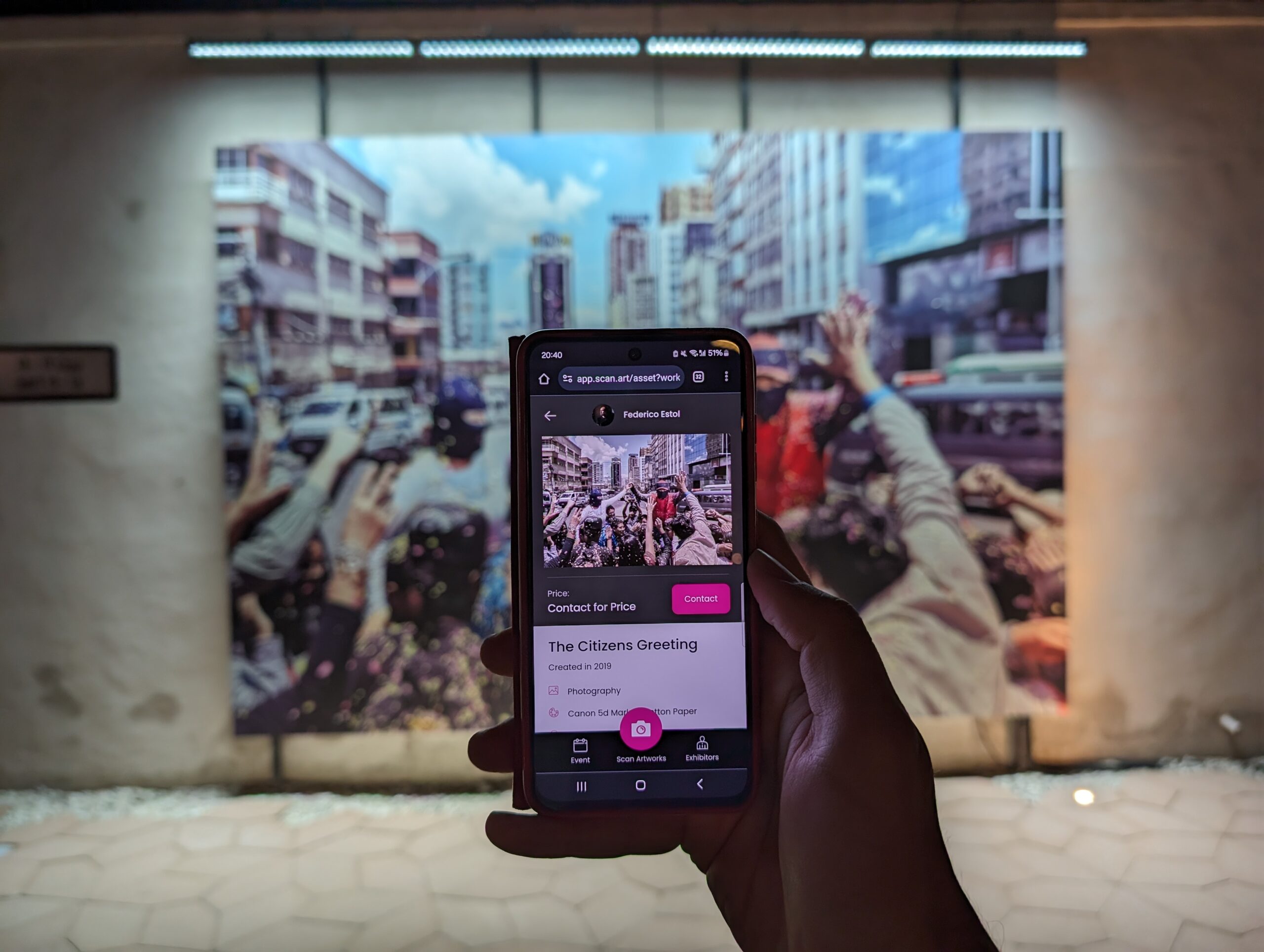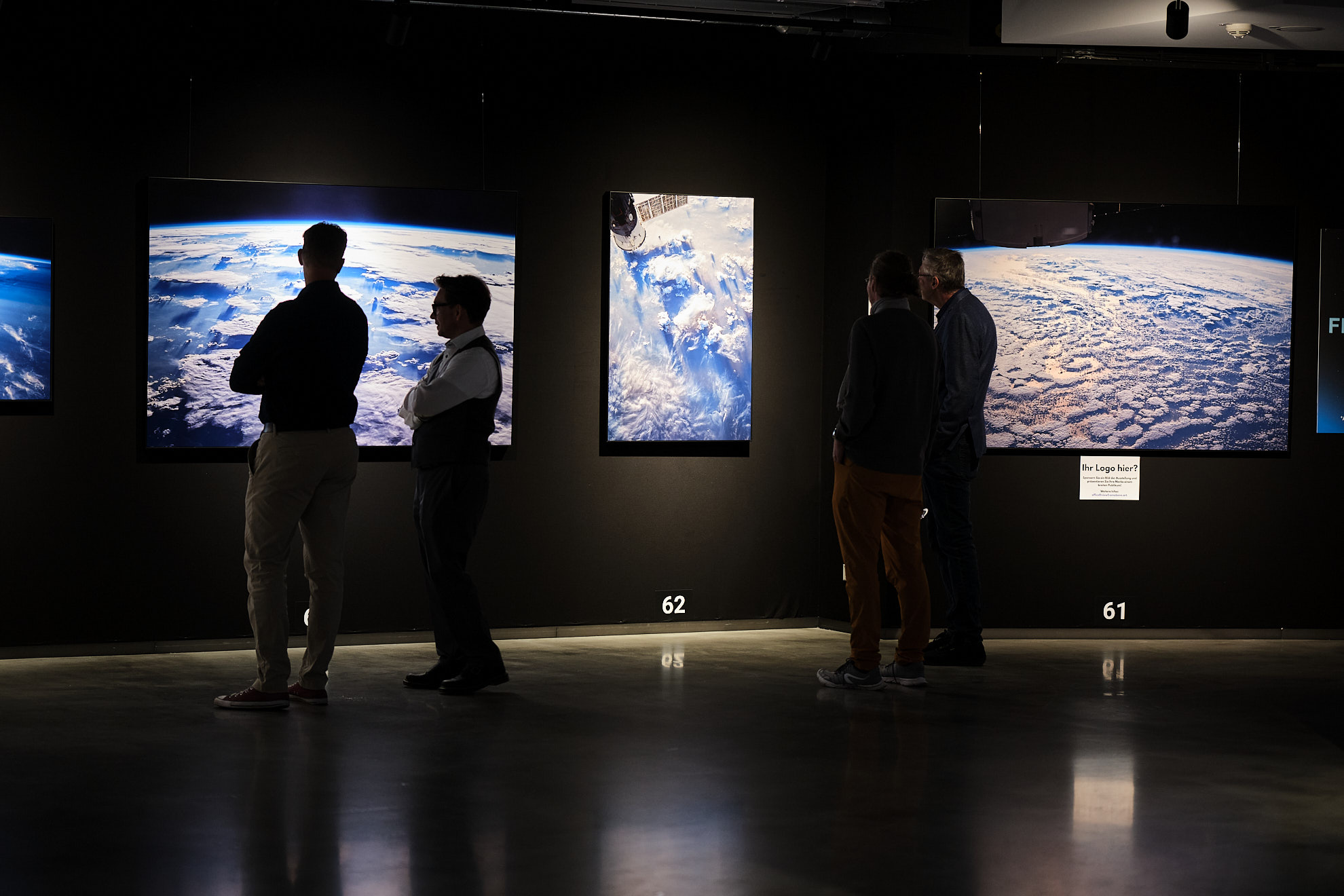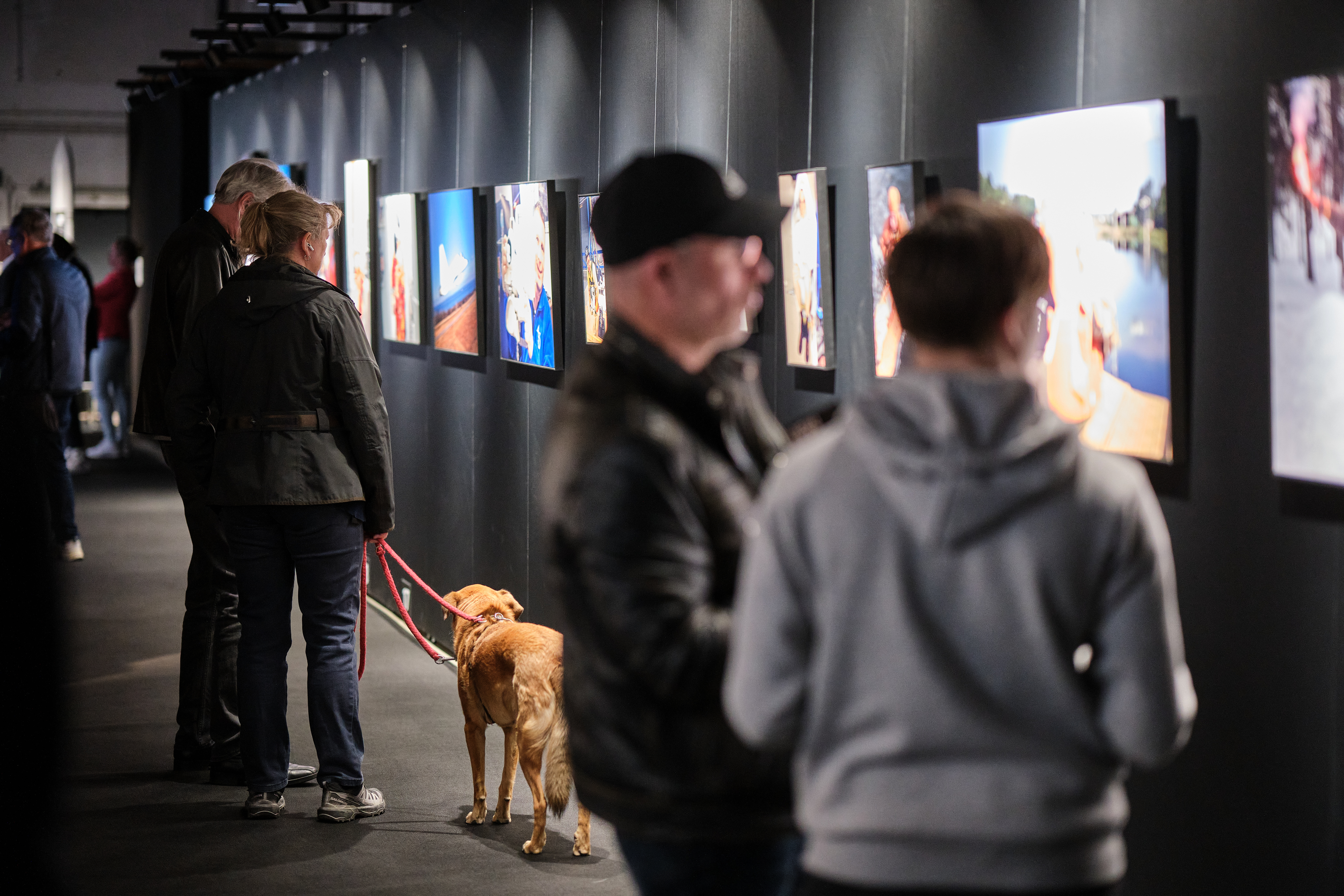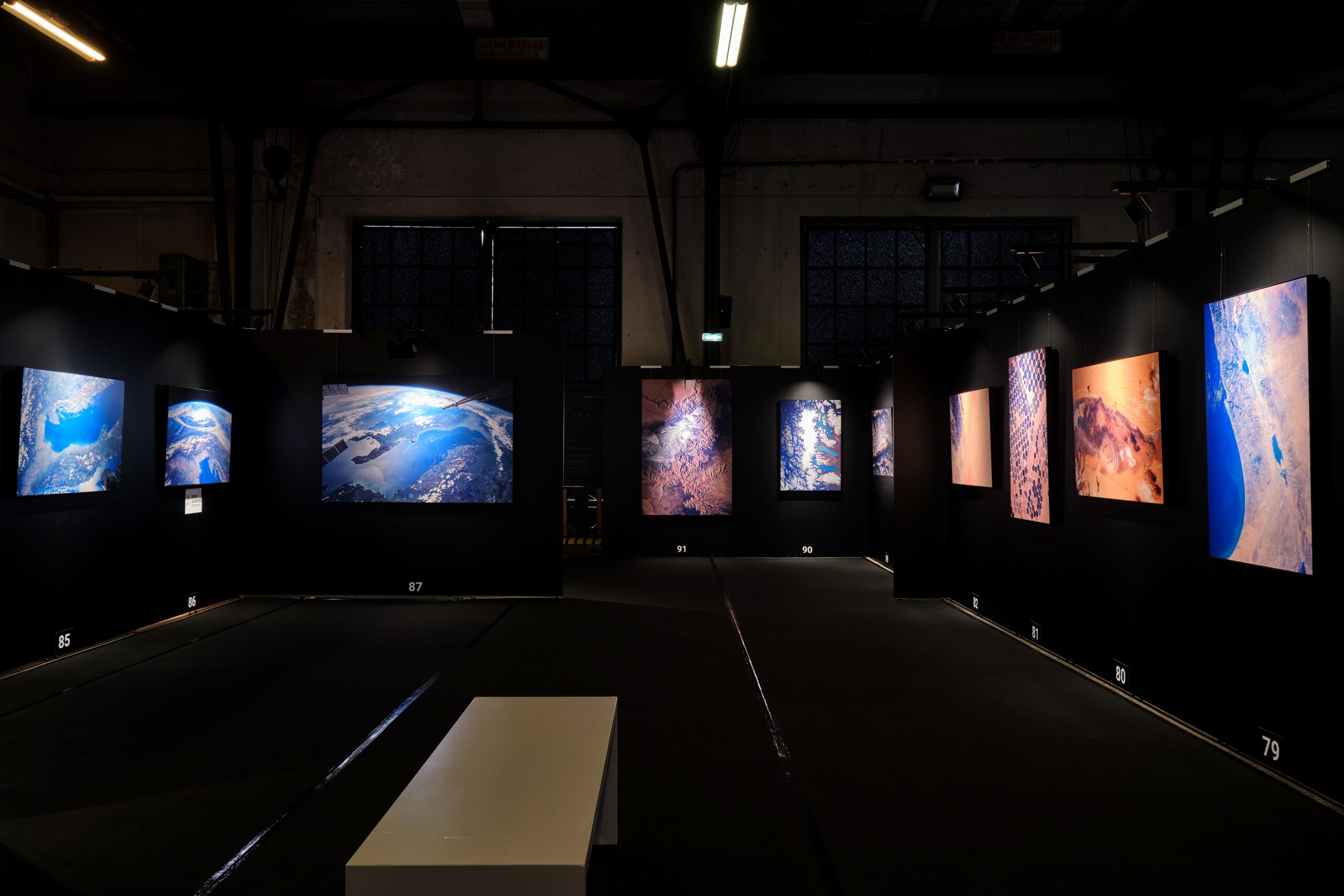In today’s world, sustainability is no longer just a buzzword—it’s an essential principle driving change across various industries, including the art world. As art fairs evolve, so does the need for innovative solutions that reduce their environmental impact while preserving the integrity and experience of art. Enter scan.art, a digital exhibition guide designed to offer a more sustainable approach to art fairs, art exhibitions and art galleries. The scan.art Web Application / Digital Exhibition Guide based on Image Recognition not only minimizes waste and energy consumption but also enhances accessibility and inclusivity, making it a game-changer in the art community.
The Environmental Impact of Traditional Art Fairs
Art fairs are vibrant events that bring together artists, collectors, curators, and enthusiasts from around the world. However, these events often come with a significant environmental cost. The reliance on printed materials like catalogs, price lists, and brochures, combined with the logistics of transporting artworks and participants, contributes to a substantial carbon footprint. According to various reports from organizations such as the Gallery Climate Coalition, the traditional model of art fairs is unsustainable and requires a shift towards more eco-friendly practices.
Reducing Paper Waste with Digital Innovation
One of the most immediate and impactful ways scan.art contributes to sustainability is by reducing the need for printed materials. Traditionally, visitors to art fairs would rely on physical catalogs and brochures to navigate exhibitions and learn about the artworks on display. These materials often end up as waste immediately after the art fair visit, contributing to the environmental burden of the event.
scan.art eliminates this waste by offering a digital alternative. Through a simple scan of a any exhibited artwork, visitors can access detailed information about artworks and artists directly on their smartphones. This paperless approach not only reduces waste but also aligns with the recommendations of the Gallery Climate Coalition, which advocates for digital solutions to minimize resource use in the art sector. In addition, scan.art also offers a digital exhibition map and exhibitor list.
Optimizing Energy Efficiency
Sustainability at scan.art goes beyond just reducing paper waste. The platform is designed with energy efficiency in mind, utilizing an innovative server-on-demand structure that minimizes both server usage and energy consumption. This means that the platform operates only when needed, reducing the energy required to maintain it continuously.
Moreover, the web app is lightweight and optimized for minimal energy use on user devices. By prioritizing energy efficiency, scan.art ensures that art fairs can embrace digital transformation without increasing their environmental impact.
Expanding Accessibility with the Discovery Art Page and The Art Fair Guy Channel
Furthering its mission to make art more accessible and sustainable, scan.art introduces the “Discovery Art” page, a feature that allows users to explore art fairs, exhibitors, and artworks online. This digital showcase is invaluable for those who may not have the time or financial means to travel to the art fair in person. By providing a virtual experience, scan.art reduces the need for physical attendance, thereby cutting down on travel-related carbon emissions. Additionally, scan.art’s YouTube channel, “The Art Fair Guy,” offers video walkthroughs of art fairs and exhibitions hosted on the platform, giving viewers a comprehensive tour from the comfort of their own homes. This approach not only democratizes access to art but also aligns with sustainable practices by reducing the environmental impact associated with traditional art fair attendance.
Enhancing Sustainability and Inclusion with the scan.art Audio Guide
In addition to its digital exhibition guide and virtual exhibition showcases, scan.art offers an innovative Audio Guide feature that further enhances sustainability and inclusion at art fairs. The scan.art Audio Guide provides visitors with detailed audio descriptions of artworks and artist information, accessible directly from their smartphones without the need for additional devices or printed materials. This feature not only reduces the reliance on paper-based guides (or unnecessary hardware audio guides) but also ensures that information is accessible to a broader audience in different languages, including those with visual impairments or learning differences. By offering an inclusive, easy-to-use tool that eliminates the need for physical guides, the scan.art Audio Guide aligns with the platform’s commitment to sustainability and expands access to the art world, making it more welcoming and engaging for everyone.
Embracing Digital Marketing for a Greener Future
Marketing is another area where traditional art fairs often generate significant waste. Flyers, posters, and other printed materials are commonly used to promote events, but they also contribute to the environmental toll of these gatherings. scan.art offers a sustainable alternative by providing digital marketing tools that allow artists and galleries to reach their audience without resorting to print.
Through scan.art, event organizers can promote their exhibitions, engage with potential buyers, and follow up with attendees —all through digital means. This not only reduces waste but also offers a more effective and targeted approach to marketing in the digital age.
Building a Sustainable Art Community
At its core, scan.art is committed to fostering a more sustainable art community. The platform’s focus on reducing waste, optimizing energy use, and supporting hybrid exhibitions is part of a broader mission to encourage eco-friendly practices across the art world. By partnering with art fairs, galleries, and artists who share this commitment, scan.art is helping to create events that are not only successful but also environmentally responsible.
The shift towards sustainability in the art world is a collective effort, and platforms like scan.art are leading the charge. By embracing digital innovation, the art community can reduce its environmental impact while continuing to celebrate and promote the transformative power of art.
Conclusion: A Greener Future for Art Fairs
As the art world continues to evolve, so too must its practices. scan.art offers a sustainable solution for art fairs that reduces waste, minimizes energy consumption, and expands accessibility. By choosing scan.art, art fairs, galleries, and artists are not only embracing the future of exhibitions but also contributing to a greener and more responsible art community.
In a world where sustainability is increasingly important, scan.art is proving that it’s possible to enjoy the richness of art while being mindful of our planet. Together, we can build a more sustainable future for the art world—one that respects both artistic expression and the environment.







